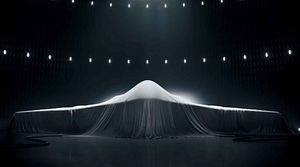On February 16, the U.S. Government Accountability Office (GAO) announced that it had denied a protest filed by U.S. defense contractor Boeing, which challenged the Air Force’s decision to award Northrop Grumman a contract for designing, building, and early production of the so-called Long Range Strike Bomber (LRS-B).
Northrup Grumman emerged as the primary contractor for the new aircraft in October 2015, beating out a Boeing-Lockheed Martin partnership. The bid losers immediately challenged the U.S. Air Force’s decision (See: “Pentagon Awards Contract For US Air Force’s New Top-Secret Bomber”).
“GAO reviewed the challenges to the selection decision raised by Boeing and has found no basis to sustain or uphold the protest,” noted Ralph White, the GAO’s managing associate general counsel for procurement law.
“In denying Boeing’s protest, GAO concluded that the technical evaluation, and the evaluation of costs, was reasonable, consistent with the terms of the solicitation, and in accordance with procurement laws and regulations,” he continued.
The details of the GOA decision and Boeing’s protest remain classified. In addition, the overall total cost for the LRS-B program also remains classified, although the U.S. Air Force announced that “the fixed price production award supports the average per unit cost of $511 million per aircraft (stated in 2010 dollars with a production purchase of 100 aircraft).” However, as I explained previously:
The contract consists of two parts. The contract awarded [in October] was for the Engineering and Manufacturing Development (EMD) phase, a “cost reimbursable type contract with cost and performance incentives,” (…) at an estimated worth of $21.4 billion in 2010 dollars.
The second part of the contract consists of options for the first five production lots to cover the production of the first 21 bombers. The USAF is expected to buy 80 to 100 bombers overall. In current dollars, the price tag for each bomber is estimated at $564 million. (Since few defense analysts expect the Pentagon to buy all 100 aircraft, the per unit cost is very likely to increase.)
The price per unit, in addition to around $23.5 billion in research and development expenditures plus future maintenance costs, means the overall total bill might exceed $ 100 billion (…).
Northrop Grumman was naturally content with yesterday’s ruling. “Northrop Grumman is pleased that the U.S. Government Accountability Office (GAO) has denied Boeing’s protest and reaffirmed the Air Force’s decision to award Northrop Grumman the Long-Range Strike Bomber (LRS-B) contract,” the company said in a press release.“The LRS-B is vitally important to national security and we are delighted to be resuming work on the next-generation Long-Range Strike Bomber.”
Contrariwise, Boeing vowed not to give up the fight just yet:
We continue to believe that our offering represents the best solution for the Air Force and the Nation, and that the government’s selection process was fundamentally and irreparably flawed. We will carefully review the GAO’s decision and decide upon our next steps with regard to the protest in the coming days.
A likely date for initial operating capability for the LRS-B — an aircraft that purportedly will feature stealth capability, carry both conventional and nuclear weapons, and be optionally manned — is tentatively set for 2025.































